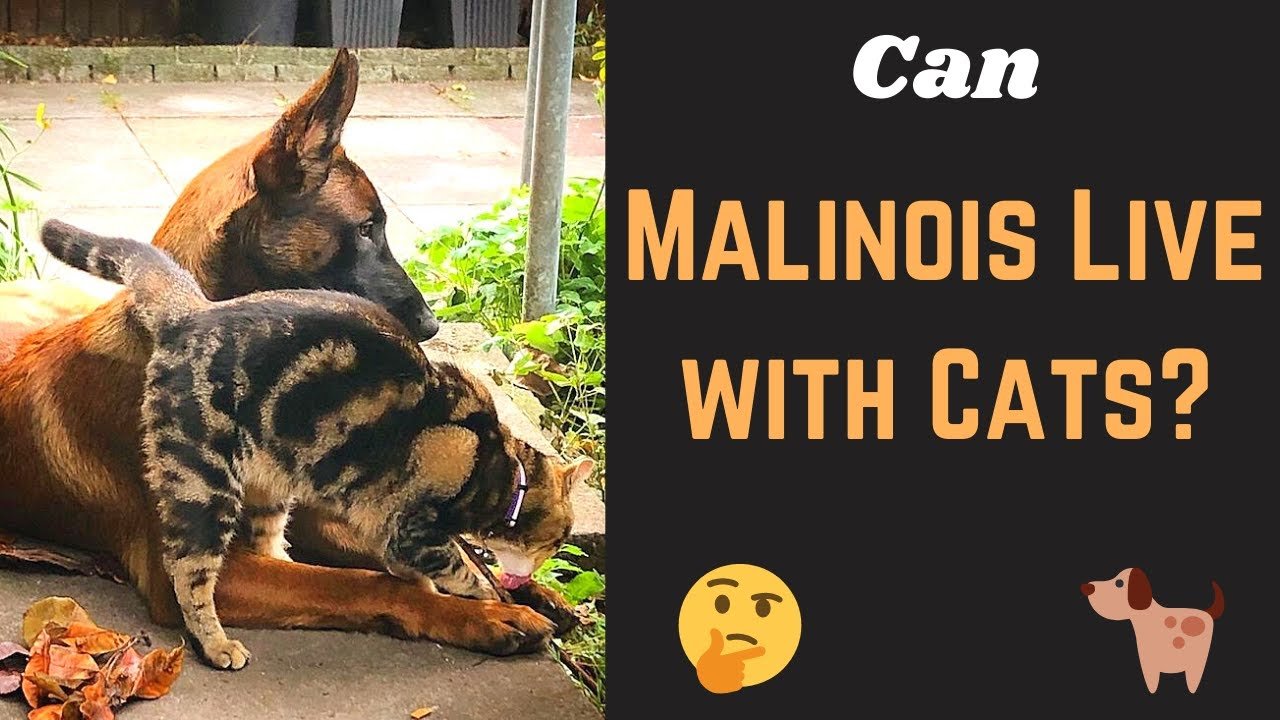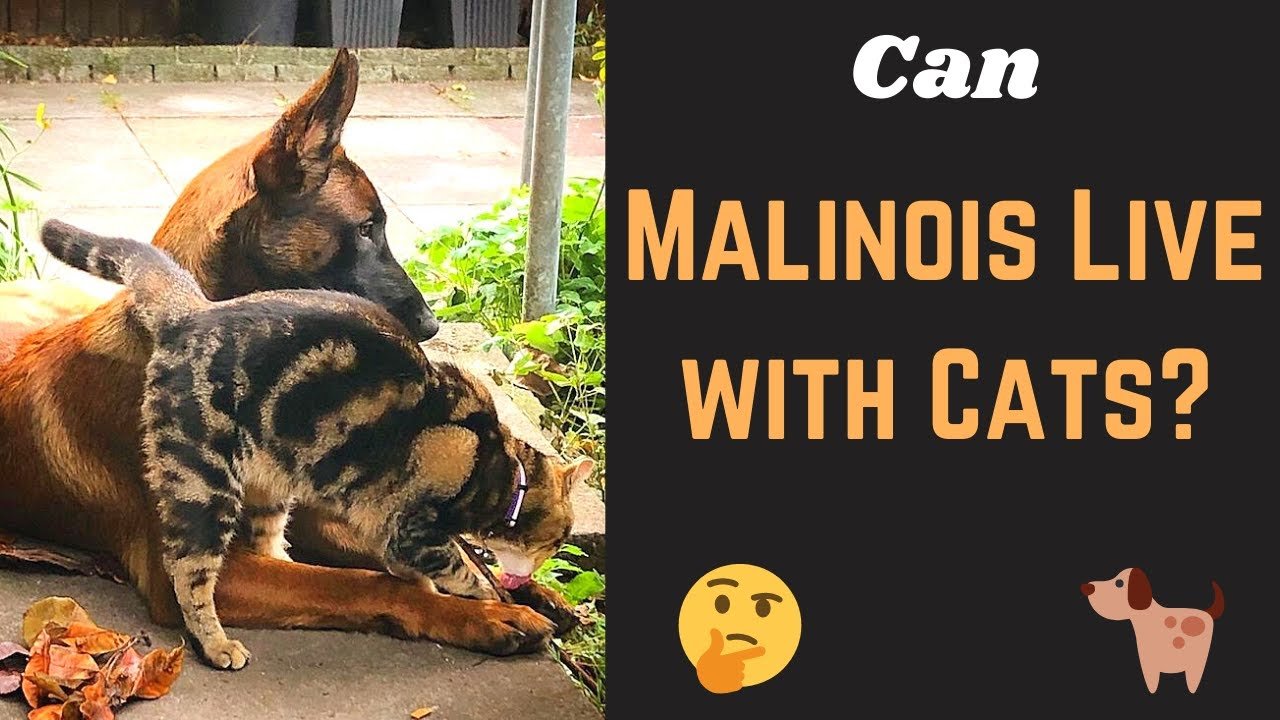If you’ve ever wondered if Belgian Malinois are good with cats, then you’ve come to the right place. In this article, we’ll shed some light on the curious relationship between these intelligent and energetic dogs and our feline friends. While every dog is unique, we’ll explore some common traits of the Belgian Malinois breed and how they may interact with cats. So, if you’re a cat lover considering adding a Belgian Malinois to your family or simply curious about their compatibility, read on to discover more about this intriguing dynamic.
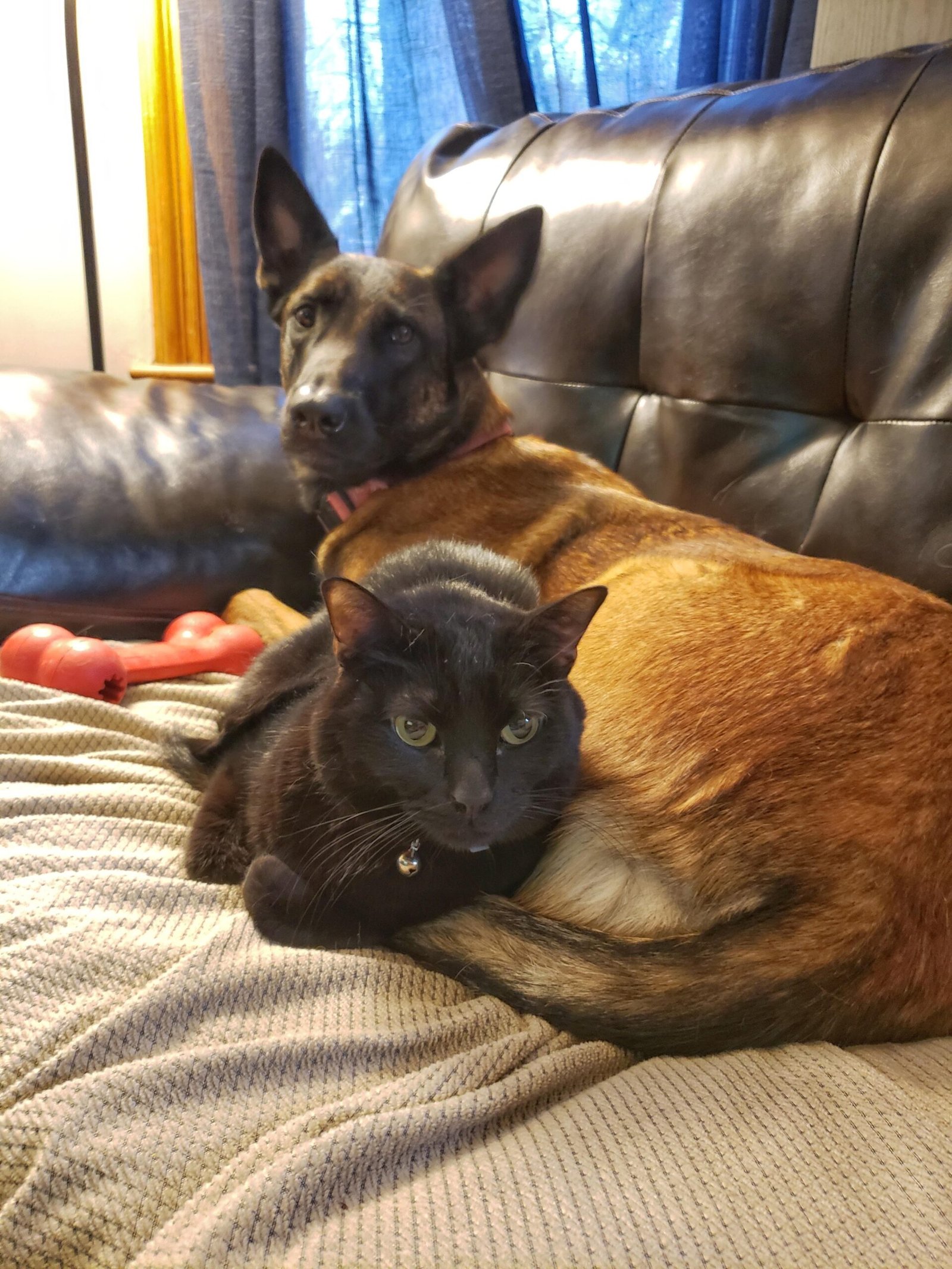
Understanding Belgian Malinois
Physical characteristics
Belgian Malinois are medium-sized dogs that are strong and well-muscled. They have a sleek and short coat that comes in various shades of fawn, mahogany, and black. Their expressive almond-shaped eyes are usually brown, and their erect ears give them a confident and alert appearance. The Malinois has a lean and athletic build, with a body that is slightly longer than it is tall.
Temperament
Belgian Malinois are known for their high energy levels and eagerness to work. They are intelligent, loyal, and protective, making them excellent guard dogs. However, their temperament can vary depending on their individual traits and upbringing. While some Malinois may be more reserved and cautious around strangers, others may be more outgoing and social. Overall, they are highly trainable and thrive when given mental and physical stimulation.
Training and exercise needs
Belgian Malinois require consistent training and ample exercise to thrive. They are agile and excel in various activities such as obedience, agility, and tracking. Mental stimulation is just as important as physical exercise for these intelligent dogs. Daily walks, playtime, and interactive toys can help meet their exercise needs. Training sessions that focus on positive reinforcement and consistency are essential to keep them engaged and obedient.
Characteristics of Cats
Independent nature
Cats are known for their independent nature. Unlike dogs, they are not pack animals and are often more solitary in their behavior. Cats value their personal space and enjoy having alone time to relax and groom themselves. This independent nature can sometimes make it challenging for them to adapt to living with another animal, such as a Belgian Malinois.
Territorial behavior
Cats are territorial animals that establish their own territories. They may become territorial over certain areas within the house, such as their favorite sleeping spot or their litter box. When introducing a Belgian Malinois into their territory, cats may feel threatened and exhibit defensive behavior. It is crucial to introduce the two pets gradually and provide each with their own space to minimize territorial conflicts.
Sensitivity to movements
Cats are highly perceptive to movements and can be easily startled. Sudden and fast movements, such as a running dog, can trigger their instinctual flight response. It is important to consider this sensitivity when introducing a Belgian Malinois to a cat. Slow and calm introductions can help reduce the cat’s stress and allow them to become more comfortable with the presence of the dog.
Factors to Consider when Introducing a Belgian Malinois to Cats
Age and socialization of the dog
The age and socialization of the Belgian Malinois play a significant role in their compatibility with cats. If the dog has been socialized from a young age, it is more likely to be accepting and tolerant of cats. Socialization involves exposing the dog to various environments, people, and animals, helping them become well-rounded and adaptable. Dogs that have had positive experiences with cats during their critical socialization period are generally more likely to coexist peacefully.
Cats’ previous experience with dogs
The cats’ previous experience with dogs can also influence their ability to coexist with a Belgian Malinois. If the cat has had positive interactions and experiences with dogs in the past, it may be more open to accepting a new canine companion. Conversely, if the cat has had negative encounters with dogs, it may be more fearful or aggressive towards the new dog. Understanding the cat’s history with dogs can help in determining the best approach for introductions.
Adult Malinois and cats
Introducing an adult Belgian Malinois to cats requires careful consideration and supervision. Adult dogs may have established behaviors and preferences that can impact their interactions with cats. It is important to introduce them in a controlled environment, using positive reinforcement techniques to create positive associations. Monitoring their body language and behavior closely during initial interactions is crucial to ensure the safety of both the dog and the cat.
Puppy Malinois and cats
Puppy Belgian Malinois have a better chance of adapting and coexisting with cats if they are introduced to them at a young age. Puppies are more receptive to socialization and learning, making it easier to shape their behavior towards cats. However, close supervision and guidance are still necessary during interactions, as puppies can be over-enthusiastic and may unintentionally overwhelm or frighten the cat. Gradual introductions and positive reinforcement training methods can help foster a harmonious relationship between a puppy Malinois and a cat.
Positive Indicators for Belgian Malinois and Cats Coexistence
Early socialization
Early socialization of a Belgian Malinois can greatly increase the likelihood of successful coexistence with cats. When a dog is exposed to cats during their critical socialization period, typically between three to fourteen weeks of age, they are more likely to form positive associations with felines. This early exposure helps the dog understand appropriate interactions with cats and reduces the chances of developing aggressive tendencies towards them.
Introducing scent before physical interaction
Before allowing the Belgian Malinois and the cat to physically interact, it is beneficial to introduce their scents to one another. This can be done by exchanging their bedding or providing a cloth that has been rubbed on one pet and placing it near the other. By getting accustomed to each other’s scents, the pets can become familiar and comfortable with the presence of the other.
Positive association and supervision
Creating a positive association between the Belgian Malinois and the cat is crucial for their successful coexistence. Treats, praise, and rewards should be given whenever the pets are in each other’s presence, displaying calm and appropriate behavior. This positive reinforcement helps both animals associate each other’s presence with positive experiences. Additionally, close supervision is essential to intervene and redirect any unwanted behavior, ensuring that the interactions remain positive and safe for everyone involved.
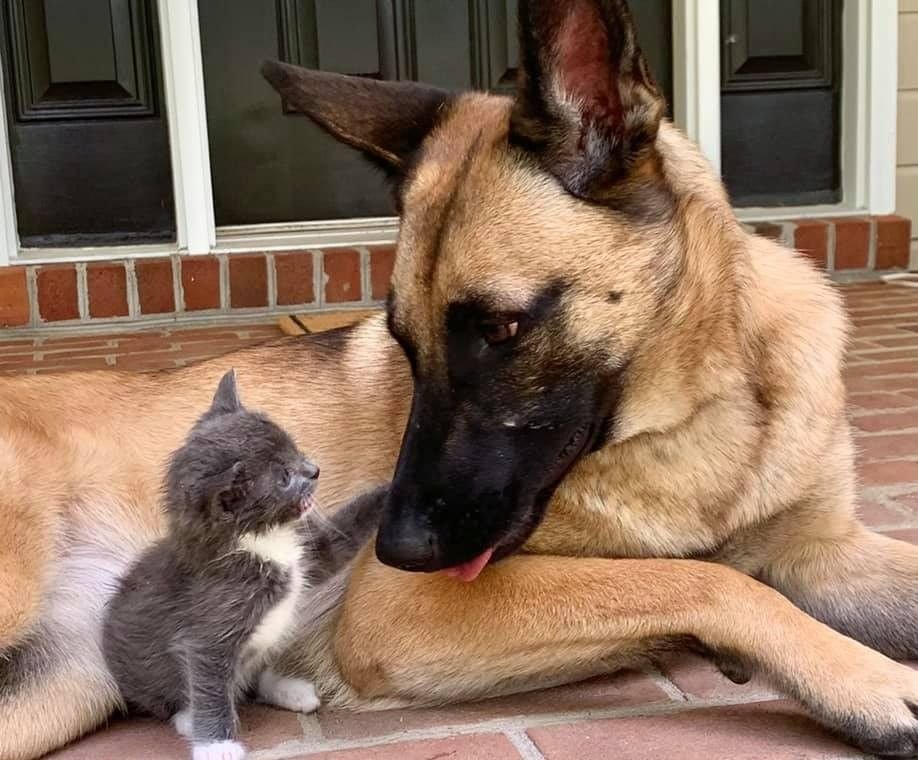
Negative Indicators for Belgian Malinois and Cats Coexistence
Strong prey drive
Belgian Malinois, being herding dogs, have a naturally strong prey drive. They may exhibit chasing or predatory behavior towards small animals, including cats. This prey drive can pose a significant challenge when attempting to introduce them to cats. If a Malinois displays excessive interest, arousal, or aggression towards a cat, it may not be safe to continue their coexistence. The safety of both pets should always be the top priority.
Lack of socialization
If a Belgian Malinois has not been properly socialized, it may lack the necessary skills and understanding to interact appropriately with cats. Without exposure to cats or positive experiences with them during their early development, the dog may exhibit fear, aggression, or excessive dominance towards the feline. In such cases, it is crucial to seek professional help to address the dog’s socialization issues and ensure the safety of both pets.
Aggressive behavior towards small animals
Some Belgian Malinois may display aggressive behavior towards small animals, including cats. This aggression can be a result of genetic predispositions, prior negative experiences, or inadequate training. Aggressive behavior, such as growling, barking, or attempting to attack the cat, should never be ignored or taken lightly. In such cases, it is essential to prioritize the safety of all individuals involved and consult with a professional to manage and address the aggression.
Tips for Introducing a Belgian Malinois to Cats
Gradual introduction
When introducing a Belgian Malinois to a cat, it is essential to take a gradual approach. Start by keeping the two animals in separate areas of the house, allowing them to become familiar with each other’s scents. Swap bedding or use pheromone diffusers to create a sense of familiarity. Slowly progress to supervised visual introductions, using barriers like baby gates or crates to ensure the physical safety of both pets. Gradual introductions help prevent overwhelming or stressful situations for the cat and give both animals time to adjust.
Using a safe room
Creating a safe room for the cat is particularly helpful during the initial stages of introduction. This room should contain all the necessary resources for the cat, such as a litter box, food, and water bowls, as well as a comfortable resting area. Providing vertical spaces like shelves or cat trees can allow the cat to observe the dog from a safe distance. Encouraging positive experiences in the cat’s safe room can help build confidence and minimize stress during the transition period.
Structured positive reinforcement training
Training plays a crucial role in establishing positive interactions between a Belgian Malinois and a cat. Using positive reinforcement techniques, such as treats, praise, and rewards, can help associate the presence of the cat with positive experiences for the dog. It is important to focus on rewarding calm behavior and redirecting any undesirable behavior. Consistency, patience, and clear communication through training can help ensure a harmonious relationship between the two pets.
Managing and supervising interactions
Close supervision is necessary during the initial interactions between the Belgian Malinois and the cat. This allows for immediate intervention if any signs of aggression or discomfort arise. Redirecting the dog’s attention to an alternate, appropriate behavior, such as sitting or lying down, can help prevent tension and maintain a positive atmosphere. Gradually increase the duration and close proximity of the interactions while ensuring the safety of both pets.
Seeking professional help
If there are significant challenges or concerns during the introduction process, it is advisable to seek the assistance of a professional animal behaviorist or trainer. Their expertise and experience can help assess the compatibility between the Belgian Malinois and the cat and provide customized guidance and training techniques. Professional assistance can ensure that the introduction is carried out safely and that the animals’ welfare is prioritized.

Training Techniques for Belgian Malinois and Cats Living Together
Proper socialization
Proper socialization is key to successfully integrating a Belgian Malinois and a cat in the same household. Socialization should involve introducing the Malinois to various people, animals, and environments, including cats. By exposing the dog to positive experiences with cats during their socialization period, they are more likely to develop appropriate behavior and acceptance towards feline companions.
Positive reinforcement
Positive reinforcement is a highly effective training technique for Belgian Malinois and cats. When the dog displays calm and appropriate behavior around the cat, they should be rewarded with treats, praise, or playtime. Conversely, any excessive or undesirable behavior should be gently redirected, and the dog should be rewarded for displaying appropriate behavior instead. Consistency and patience are key in reinforcing positive behavior and discouraging unwanted behavior.
Teaching obedience commands
Teaching obedience commands to a Belgian Malinois is important when living together with cats. Commands such as “sit,” “stay,” and “leave it” can be used to manage and control the dog’s behavior around the cat. These commands help establish boundaries and expectations for the Malinois, ensuring that they understand and respond appropriately to cues given by their human caregivers.
Creating a cat-friendly environment
Creating a cat-friendly environment is essential to ensure that the cat feels safe and secure with the presence of the Malinois. Providing vertical spaces, hiding spots, and separate feeding areas for the cat can help reduce stress and offer the feline a sense of control. Additionally, ensuring that the cat has access to its resources without interference from the dog, such as a separate litter box or elevated feeding stations, can help maintain a peaceful coexistence.
Signs of Compatibility between Belgian Malinois and Cats
Curiosity without aggression
A compatible relationship between a Belgian Malinois and a cat is often marked by the dog’s curiosity without exhibiting aggression. When the Malinois shows interest in the cat, such as sniffing or observing from a distance, without displaying signs of aggression or heightened arousal, it indicates a positive potential for coexistence.
Respectful distance
Another indicator of compatibility is when the Belgian Malinois maintains a respectful distance from the cat without actively trying to approach or chase. This demonstrates an understanding of boundaries and a level of self-control. The dog’s ability to observe and be in proximity to the cat without causing stress or fear is a positive sign.
Friendly interactions such as sniffing or play
Friendly interactions between a Belgian Malinois and a cat, such as gentle sniffing or playfulness, indicate a harmonious relationship. When the two pets engage in these positive interactions without aggression or fear, it is a good indication that they are comfortable and accepting of each other.
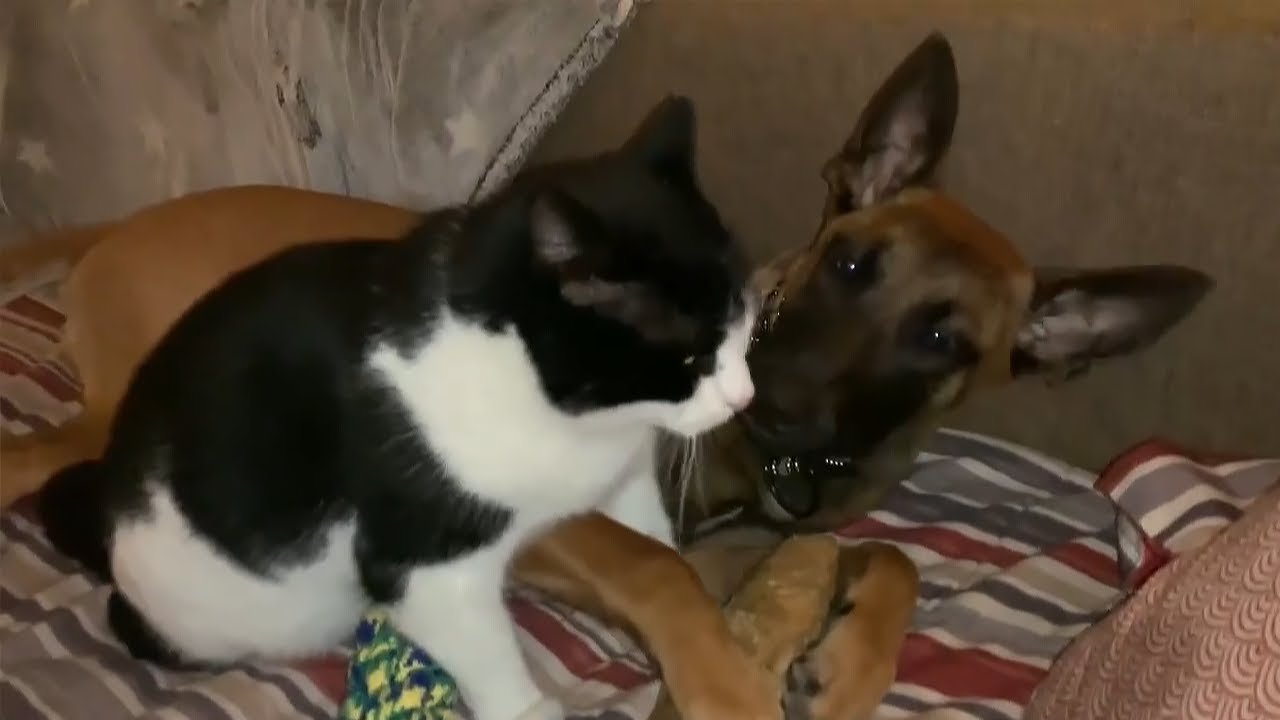
Signs of Incompatibility between Belgian Malinois and Cats
Persistent chasing behavior
Persistent chasing behavior from the Belgian Malinois towards the cat is a strong indicator of incompatibility. If the dog continually focuses on pursuing the cat, regardless of the cat’s reactions, it can be distressing and dangerous for both animals. This behavior suggests a strong prey drive or potential predatory aggression, which may make it unsafe for the two pets to coexist.
Growling or barking at the cat
Growling or barking directed at the cat is a clear sign of tension and potential aggression from the Belgian Malinois. These vocalizations often indicate a threat or warning, and it is important to address this behavior to avoid any harm to the cat. Professional help should be sought to address these signs of aggression and ensure the safety of both pets.
Aggressive attempts to attack
Any attempts by the Belgian Malinois to physically attack or harm the cat are clear indicators of incompatibility. Aggressive behaviors, such as lunging, snapping, or biting directed towards the cat, should never be ignored or tolerated. Immediate action should be taken to separate and protect the cat, and professional help should be sought to address and manage the aggression.
Conclusion
Assessing individual personalities and behaviors is crucial when considering the coexistence of a Belgian Malinois and a cat. While some Belgian Malinois can successfully live harmoniously with cats, it is important to take necessary precautions to ensure the safety and well-being of both pets. Factors such as the age and socialization of the dog, the cat’s previous experience with dogs, and the dog’s behavior towards small animals should be carefully evaluated. Introducing the pets gradually, using positive reinforcement techniques, and seeking professional help when needed can increase the chances of a successful and peaceful coexistence. With proper training, management, and understanding, it is possible for a Belgian Malinois and a cat to live together and form a bond.
